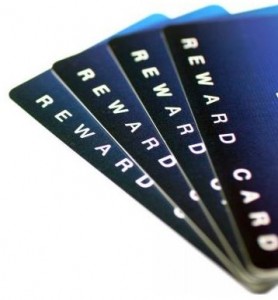 Are you searching for best rewards credit card? If you are, then you are probably aware that there are many options open to you‚ some of which are better than others. As you search and compare each and every card, it is important to know what you are looking for in both a personal and financial sense. With this in mind, what follows are five features of the ideal rewards credit card to look out for in your comparison:
Are you searching for best rewards credit card? If you are, then you are probably aware that there are many options open to you‚ some of which are better than others. As you search and compare each and every card, it is important to know what you are looking for in both a personal and financial sense. With this in mind, what follows are five features of the ideal rewards credit card to look out for in your comparison:
1. Low or no annual fee: Let face it, there is nothing worse than paying an annual fee for the ability to use a specific credit card. This may be common practice, but not every credit card charges a fee, although they are more common among rewards cards.
Ideally, you will find a rewards credit card with no annual fee that matches your requirements and has an achievable approval criteria. If not possible for any reason, focus on the cards with the lowest fee, usually $100 or less. It’s important to get a low annual fee because the less you pay, the fewer points are negated in value by that fee.
2. High earn rate on points: How many points will you receive for each dollar that you spend? This is one of the most important questions to answer before choosing any rewards credit card because, in short, the more points you earn per dollar spent, the faster you can accumulate them and redeem them for something of ‘real’ value like free travel. If you don’t know the answer to this question you could easily make a bad decision.
At the very least, you want a credit card that offers one point for every dollar spent. However, there are cards that offer two or more points per dollar. You’ll also want to watch out that the upper earn rate doesn’t apply only to purchases at a certain store, e.g. some rewards credit cards offer a higher earn rate for gasoline and airfares.
You’ll also want to check that the card doesn’t have a cap or tier on points. Capping means that you are limited to earning a certain number of points per month or year, while tiering means that spend above a certain amount per month is rewarded (usually) at a lower rate. Both of these are well worth keeping an eye out for as they can significantly affect how many points you can earn.
3. High points value: It is one thing to collect rewards points. It is another thing entirely to put these to good use. How can you use your points? How many points do you need to get something of value?
Don’t be fooled by rewards programs offering a high earn rate per dollar spent. It may be the case that each point is actually worth less, which therefore means you need to spend more to get enough points to ‘buy’ something through the program.
Here’s an example for illustration: one program may require 25,000 points for an air ticket. Another program may require 35,000 points for a flight with the same airline. It is simple to see which one is better, right?
4. Personal concierge service: There is no doubt that you are attracted to a rewards credit card because you can cash in points for a variety of products and travel arrangements. That being said, this is not the only feature to consider.
Some cards offer a personal concierge service. With this, you will have a “personal” assistant who can help with everything from booking travel arrangements to restaurant reservations to finding the hottest event tickets. (In reality your assistant is part of a large team who helps many other people apart from yourself.) Nevertheless, if you’re a busy person, as most people are now, then being able to delegate tasks to someone on a 24/7 basis is worth a lot.
5. Low ongoing purchase interest rate: Although your main focus is on the perks, you do not want to forget that you will actually be using your credit card. And it’s for this reason that you need to find one that has a reasonable purchase interest rate. This is especially important if you are unable to pay off your balance at the end of the month. Having said that, if you really want to maximize the value of the points earned, the last thing you should be doing is to carry a rolling balance from month to month. Even just a couple of months of paying interest can quickly negate the real value of your rewards.
Image Credit
